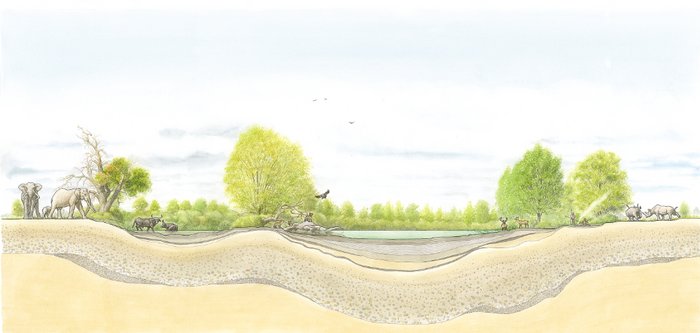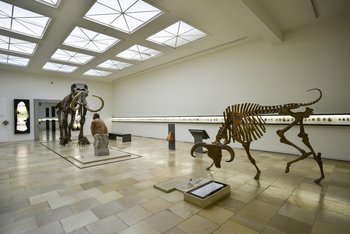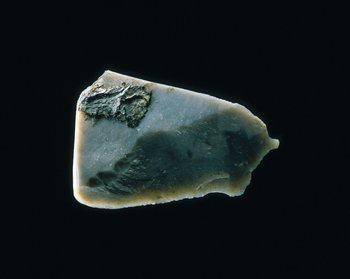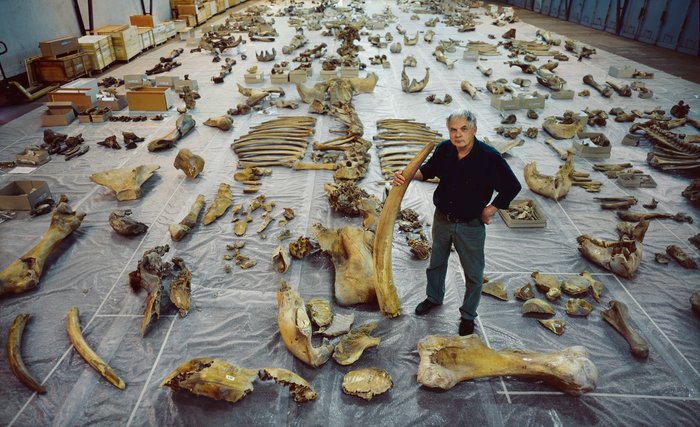Mental power
The Land of the elephants of Neumark-Nord 1
A huge bull elephant breaks through the bushes and rushes to the waterhole. The swans flutter excitedly over the shallow lake, while the pack of hyenas on the other side of the lake barely looks up from its prey.
The most dangerous predator hides lurking in the steppe, waiting for the right moment and the perfect prey. The humans are on the hunt …
This scenario could have happened around 200,000 years ago at the lake of Neumark-Nord 1. The relics of this lake biotope, excavated and researched by Prof. Dr. Dietrich Mania and his team of scientists, show the diversity and strangeness of this bygone world.
More than 1,500 skeletal parts of approx. 70 Eurasian straight-tusked elephants (Palaeoloxodon antiquus) have been discovered, making Neumark-Nord 1 a unique site. The height of the animals overtopped every elephant living today and they boasted mighty tusks
The rest of the fauna also impresses – through its diversity. The remains of more than 200 animal species could be examined, ranging from the smallest beetles to rudd and pike to hyenas, rhinoceroses, and cave lions.
Between the remains of an aurochs and a steppe rhinoceros laid flint knives; these animals were hunted and killed by humans.
One small find that caused quite a stir is a flint scraper on which an organic substance has survived. It is a residue of a highly concentrated oak acid that was produced by humans and used to tan fresh animal hides. Thus, the Neanderthal is by no means a dull muscle man, but a person who made clothes and deliberately employed specific biological agents.
In 2010 a large special exhibition on the Neumark-Nord 1 site took place at the State Museum. More information can be found in the exhibitions archive for the temporary exhibition ›Land of the Elephants – A Fossil World in Europe‹ (in German only).



